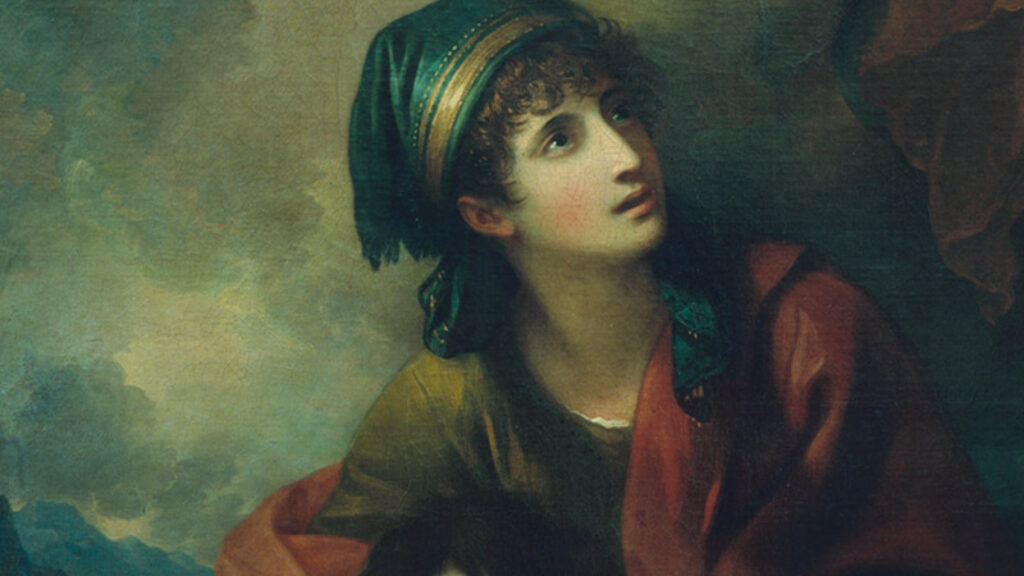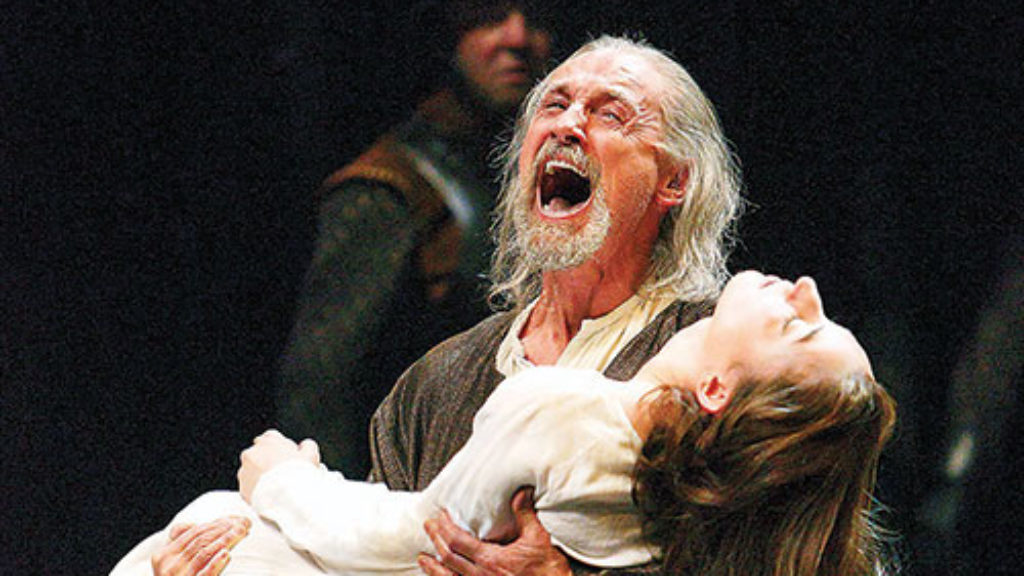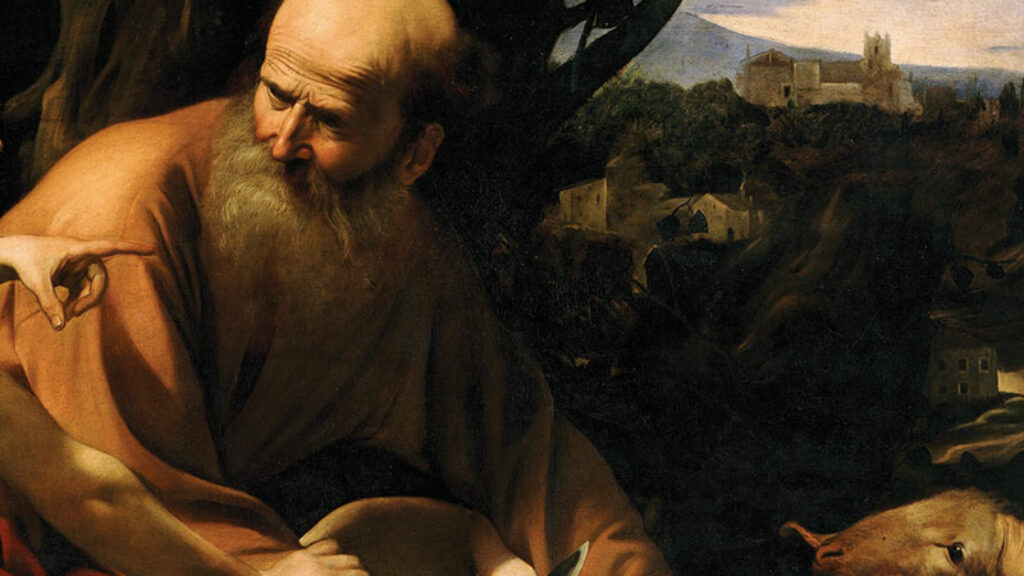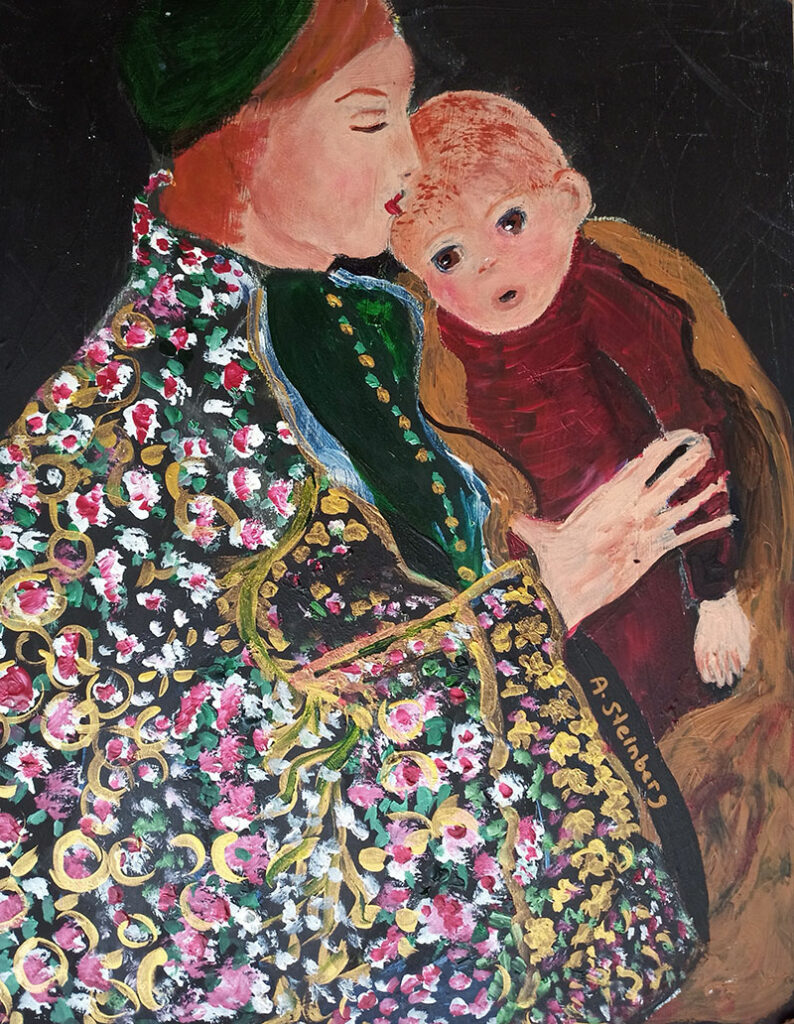Akedat Hannah
Every year, Hannah goes up from her home in Ramah to the Temple at Shilo to bring sacrifices and to pray for a child. After many years, Hannah offers God a deal: if God grants her a child, she will give the child back to God. He will live in Shiloh, in God’s house, not Hannah’s. That day, Hannah receives a blessing from the high priest, and soon conceives. A few short years later, she weans the long-awaited baby, Samuel, takes him up to the holy place, makes a sacrifice, and goes back home without him. Hannah’s journey to give Samuel up at Shilo echoes Abraham’s journey up Mount Moriah. Her vow binds her son to an altar just as much as Abraham bound Isaac, but her sacrifice has a different origin and her story a different ending.
In fact, the Torah and Haftarah readings for Rosh Hashanah bring us three episodes of child sacrifice—in addition to the binding of Isaac, both Abraham and Hagar are forced to give up Ishmael, with very different results. Hannah’s giving up of Samuel is not often interpreted as a parallel sacrifice, but reading these stories together is illuminating. She is a parent who longs many years for a child, and finally has one after a divine remembrance. The child is a source of joy, but also one of terror, for the God that gives also requires return.
When it is time, both Hannah and Abraham set out on a journey with their na’arim, their little boys. The journey from Hannah’s home to the Temple is described as a going-up, and Abraham’s task is, famously, to bring Isaac up as an olah, a burnt-offering. Abraham ends up slaughtering a ram, while Hannah slaughters a bull. Crucially, both boys live on after their parent’s journey, but no one in the story is ever the same.
There are differences, of course. Hannah’s sacrifice is her own idea: no divine voice prompts her to this terrible mission. More importantly, Hannah completes her sacrifice while Abraham’s is famously, miraculously interrupted.
At the moment of sacrifice, Abraham sees a ram with its horns (karnav) stuck in a thicket, and offers the ram “in place of (tachat) his son” (Gen 22:13), but no angel stays Hannah’s hand or annuls her vow. After Hannah gives up Samuel, Eli blesses Hannah’s husband with: “more children from Hannah in place of (tachat) the one you lent” (1 Sam 2:20). Here, the meaning of “tachat,” the substitution, is reversed. While Abraham’s substitution means he gets to keep the boy, Hannah’s means she is never getting Samuel back.
After she gives him up, Hannah sings, “my horn (karni) exults in the Lord,” but her horn is only metaphorical—the boy is gone, there is no ram (1 Sam 2:1). Of course, Hannah visits Samuel at Shilo every year, but this means she also leaves him behind every year. It is an annual Akedah.
When Eli gives Hannah’s husband a blessing, that Hannah should have children to replace the one she gave up, Hannah is silent. Despite Eli’s hope that “new” children will replace Samuel, Hannah’s actions show that, despite the distance between them, she never forgets him.
We see her work to maintain her connection with Samuel: “[Every year] His mother would make him a little robe, and she would bring it up to him. . . when she ascended with her husband to make the annual sacrifice.” Perhaps this robe was Hannah’s way of reneging, ever so slightly, on her vow to give up her firstborn.
Samuel grows, but the robe stays “little.” Perhaps she always made the robe a little small, because she wouldn’t have seen him for a year, and thus, couldn’t know how much he’d grown. We don’t know what these visits were like for young Samuel, whether he looked forward to them with love, or whether they filled him with dread, anger, and sorrow. (Anyone who has dropped a child off, or been that child dropped off, knows that both parent and child may feel all of these things at once, and more, at drop-off, or pick-up, or any time in between.)
Yet while the text is silent about how Samuel feels, it does tell us what he does. In the summary of Samuel’s life, we learn that:
Samuel judged Israel as long as he lived. Each year he made the rounds of Bethel, Gilgal, and Mizpah, and acted as judge over Israel at all those places. Then he would return to Ramah, for his home was there, and there too he would judge Israel. He built an altar there to the LORD. (1 Samuel 7:15-17)
When he grows up, Samuel returns to Ramah, “for his home was there.” Even after all his years away at Shilo, Ramah—the city of Hannah—is Samuel’s home. But going home does not mean renouncing the life of divine service that Hannah chose for him. Samuel comes home and builds an altar in Ramah. Samuel takes the life of divine service, and family life—which were, for Hannah, wholly separate—and integrates them.
Samuel’s way of serving God involves serving in different cities but returning home every year. He is never fully at home, but because he has established that his journey is a circuit, he is never truly away, either.
Of course, before Samuel returned to Hannah, Hannah returned to him, year after year, bringing the robe, and with it the domestic work of Ramah (the spinning, the weaving, the dying, the sewing) into Samuel’s work in the Temple. Hannah creates something that integrates Ramah into Samuel’s priestly life, and in return, one day, Samuel will build his altar, and make his priestly home, in Ramah.
The Haftarah for the Second Day of Rosh Hashanah draws our attention back to Ramah, the city of Hannah. But this time it is a different mother’s voice we hear, weeping not just for one child but for myriads of children—her exiled descendants—that is, for us.
A cry is heard in Ramah—
Wailing, bitter weeping—
Rachel weeping for her children. (Jeremiah 31:15)
Rachel is said to weep at our exile, and so God promises Rachel that her children will return. The Rabbis wonder why Rachel cries out from Ramah specifically, when, according to the Torah, the location of Rachel’s grave is elsewhere, “on the road…to Bethlehem” (Gen 48:7). Perhaps Rachel’s voice comes from Ramah, because Ramah is not just the city of Rachel’s tears, but also of Hannah’s hope and Samuel’s return.
On Rosh Hashanah, the mahzor instructs us to say, “Just as our father Abraham suppressed his compassion for his only son and would have slaughtered him to do Your will, so may Your compassion suppress Your anger against us.” Here, the Jewish people are like a child bound to an altar, praying for a miracle to arrest the knife raised above our head.
The choice to read the Akedah of Hannah on Rosh Hashanah suggests a different, less passive model of a parent-child relationship. In the story of Akedat Hannah, we find ourselves identifying with both the mother who sacrifices her son but continues to bring him his “little robe” each year, and the son who ultimately returns to his mother and her city. And so, we are invited to view Rosh Hashanah not only as a time of Divine Judgement—but also one of Divine Reunion.
Suggested Reading

“The One You Love”? A Case of Divine Disappointment
Which son did Abraham favor? Reading "the binding of Isaac" with fresh eyes.

Upon Such Sacrifices: King Lear and the Binding of Isaac
How Shakespeare helps us think about the akedah, and vice versa.

Take Your Son . . .
A new book about the interpretation of the most terrifying verses in the Hebrew Bible.
Who Is David?
Scholars and lay readers remain fascinated by the biblical stories of David and the history behind them, as a new batch of books shows.

Comments
You must log in to comment Log In